PRESTO PLANS
Sent straight to your inbox
CLICK HERE TO ACCESS
Sign up to receive 10 ready-to-use ELA resources your students will love!
10 FREE ELA RESOURCES
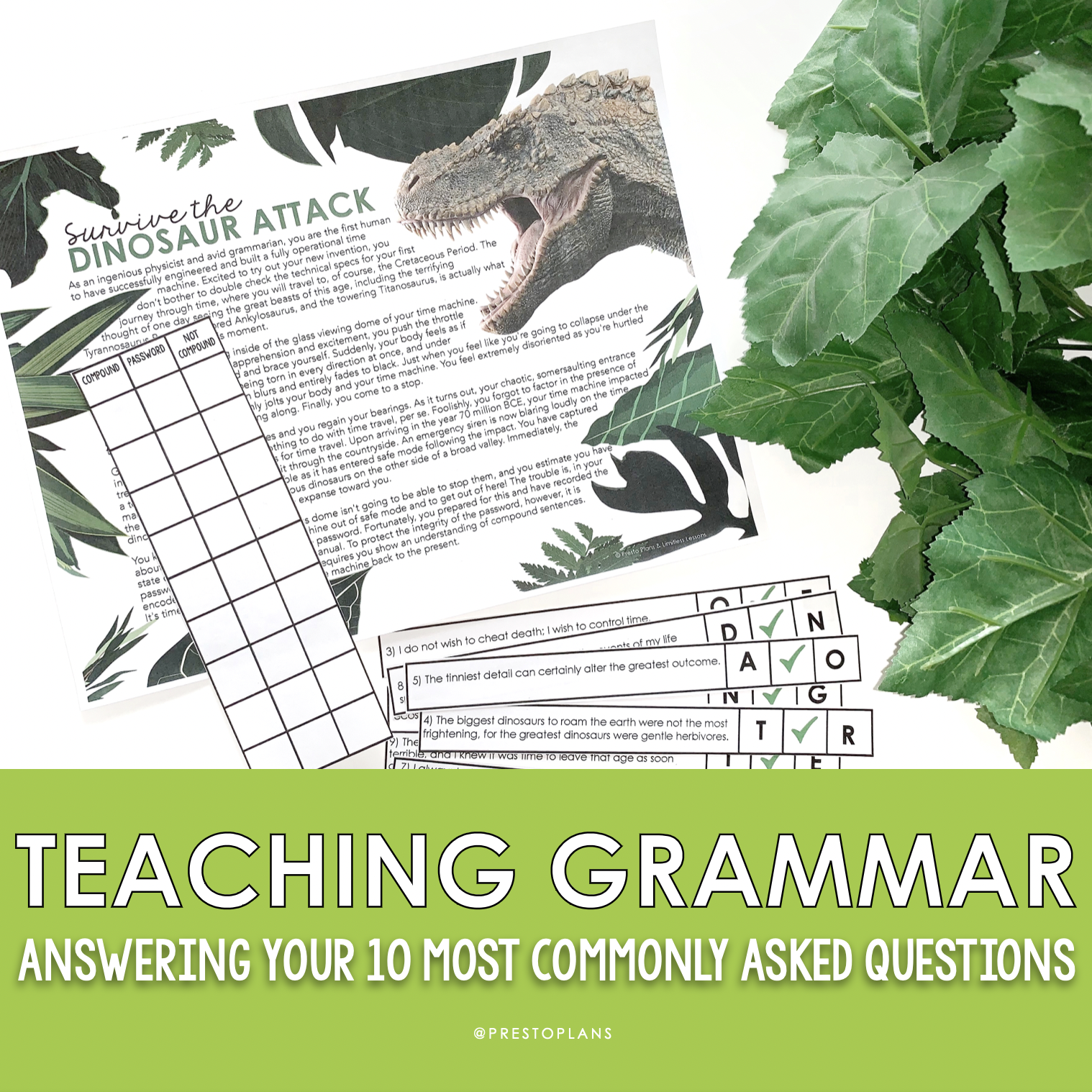
Teaching Grammar in Middle School – Answering Your 10 Most-Asked Questions
Not sure where to start when it comes to teaching grammar in middle school? Don’t worry! I’ve been there. Figuring out how to teach grammar basics in ELA can seem like a daunting task. Luckily, with a bit of creativity and a few tricks up your sleeve, you can make grammar accessible (and maybe even fun!) for even the most reluctant students!
If you’re curious about teaching grammar more effectively in middle school, I’ve answered 10 of the most-asked questions I get about teaching grammar below.
1. What is the best way to start teaching grammar?
I like to look at teaching grammar in middle school as a marathon, not a sprint! ELA skills require regular practice, so I think it’s wise to adopt a slow-and-steady approach. Running a stand-alone grammar unit seems quite daunting to me! Instead, I prefer integrating grammar instruction throughout the year. I find this is much less overwhelming for my students, and for me!
To begin, I recommend looking at your long-range plans to see where grammar concepts might be naturally integrated into your existing units of study. There’s no need to reinvent the wheel! It might be that certain grammar concepts, like punctuating dialogue, can be taught alongside a novel study or short story unit you were already planning to use with your class. Alternatively, if you’re using quick activities (like bell-ringers) to begin your daily lessons, these can allow you to revisit grammar concepts throughout the year in a structured way.
No matter how you choose to approach teaching grammar in middle school, I recommend a less-is-more approach. You’ll get a lot more bang for your buck by focusing on one or two concepts a week and building on this understanding over time. Students can grow their grammar skills without getting bogged down in too much direct instruction. This also allows your teaching to be more responsive to your students’ needs – you can adjust your pace and revisit concepts as you go!

2. What skills do my students already know?
While a quiz or pre-test might be a tempting option to assess what students already know, I have another suggestion to try! Quizzes and tests can be useful tools in your assessment repertoire, but they don’t always allow students to demonstrate their full understanding of grammar in context. For additional insight into students’ grammar skills, I recommend having them complete a short free-writing activity on a given topic. I like to explain to students that I will not grade their work but will use their writing samples to specifically identify their strengths and struggles with grammar.
When reviewing student work, it can be useful to have a class list or notebook handy to record areas of focus. It can be especially helpful (although time-consuming) to make brief notes on each student. Alternatively, you can also look for general trends across your entire class. For example, your students might already have a solid understanding of capitalization but struggle with punctuation. However you choose to record your data, these exercises can be a valuable way to get a general sense of where your students are starting out, and what areas you might like to target first.
3. What grammar skills should be focused on?
The best place to start when teaching grammar in middle school is to look at your curriculum. I like to read the list of specific standards closely, highlighting all the outcomes specific to grammar. However, it’s important to remember that these standards are your end goal, not your starting point! It’s possible (and even highly likely) that many of your students might come to your class without having met the grammar standards from the previous year.
With this in mind, I recommend starting with a review of basic elementary grammar skills. This ensures everyone in the class has the same baseline understanding of capitalization, end punctuation, internal punctuation (like commas and semicolons), and the parts of speech. Your students need to be able to walk before they can run – there is no sense in going into higher-level concepts like misplaced modifiers if they don’t know how to identify an adjective!
This scaffolded approach might mean that you need to spend a good part of the first term reviewing the basics, but I promise it will pay off! To make grammar review more engaging, I love incorporating activities from the full-year Grammar Challenge program! These challenges can be run in any order you like, so you may wish to organize them so you begin with more basic tasks and work toward more complex skills as the year goes on.
4. In what order should I teach the concepts?
The 40-week Grammar Challenge program is organized so that the grammar concepts become increasingly more challenging as students progress through your course. Early in the year, students participate in engaging, collaborative tasks to review capitalization, homophones, and the difference between “your” and “you’re.” Once they’ve mastered the basics, they can progress to more advanced concepts, like parallel structure, and subject-verb agreements. By the end of the year, students will be ready to complete the most rigorous tasks, involving complex and compound sentences, subordinating conjunctions, and independent and dependent clauses.
Of course, you can teach these concepts in any order you like – the challenges are flexible enough that you can rearrange and shuffle them into a system that works for you! You can even run multiple challenges at once, accommodating different learning needs in your classroom!
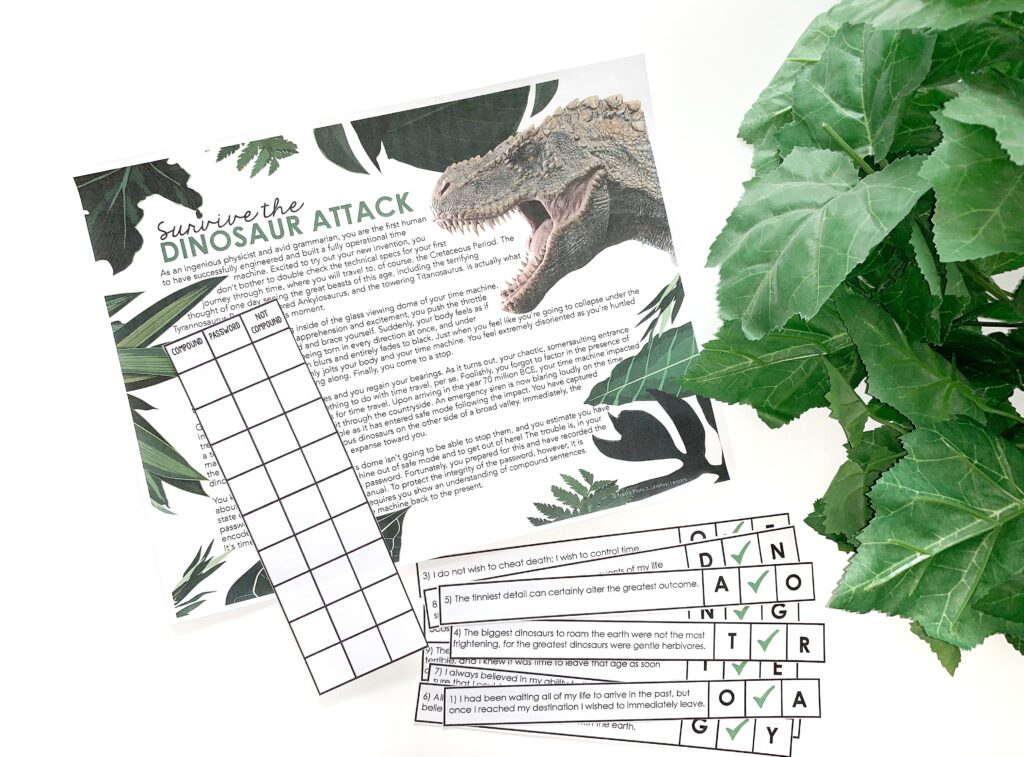
5. How can I fit it into my schedule?
I know there are some people who believe that grammar should only be taught in context, and concepts should be addressed as they naturally arise. This doesn’t work for me, though – I am a planner! While I think reading and writing activities provide useful opportunities to revisit grammar concepts, I also think there is huge value in providing direct instruction for various grammar concepts throughout the year.
In my opinion, approaching grammar in this way gives students a foundational understanding of how to recognize and apply grammar rules through modeled responses first. This, in my experience, makes it more likely that they will be able to utilize their grammar knowledge in their own writing. The eventual goal, of course, is for them to take their knowledge of grammar into the “real world” as they prepare for life after school!
For a structured, systemic approach to grammar instruction, I love using scaffolded weekly grammar challenges throughout the school year. This concept-by-concept approach is manageable for students (and teachers!) because it focuses on only one or two specific skills at a time. Best of all, it offers students lots of engaging and collaborative ways to practice and apply their understanding of grammatical concepts!
6. How can I help students understand the importance and value of grammar skills?
I think a frank conversation with students about the “life skills” application of grammar can really support their understanding. Most middle and high schoolers understand that, as adults, they may wish to pursue professional goals, like getting a job or advancing in their careers. With this in mind, I like to frame grammar skills as the written equivalent of “dressing for success” in a job interview. I explain that good grammar can make job applications, college applications, and other professional documents stand out from the crowd. They also highlight the candidate’s attention to detail.
To really hammer this point home, you might even wish to show students some “real life” texts (like a cover letter) where there is a clear difference between the grammar skills of two candidates. Ask them to evaluate the overall quality of the text, and have them identify which candidate would be more likely to get the job!
7. How can I make grammar skills “stick”?
Making grammar skills “stick” can be fun (yes, really!). I have a few different approaches that I like to use when teaching grammar in middle school. I find students really get a kick out of surprises. You could create a classroom tradition like “What’s Wrong Wednesday” by displaying a funny sentence on the board (full of errors like lowercase “I” or the wrong “they’re/their/there”) without any comment while you take attendance. This can often spark a natural conversation about grammar errors, which can result in great learning opportunities!
It can also be fun to create a “Grammar in the Wild” bulletin board display. On it, you can post humorous examples of real-life grammar fails. This might even spark students to pay closer attention to grammar in the world around them. To engage students even further, you can encourage them to take photos of the “Grammar in the Wild” errors they encounter outside of school (like errant apostrophes on store signs) and add them to the display with an explanation of how they would correct the error!
8. How can I make grammar more engaging, relevant, and interesting to my students?
I find that in addition to offering structured opportunities for students to practice and engage with grammar skills during weekly Grammar Challenge activities, students love when ELA skills can be connected to their real-life experiences or things they are interested in. Linking grammar to social media, texting, or music lyrics can create a sense of relevance for middle or high school ELA students.
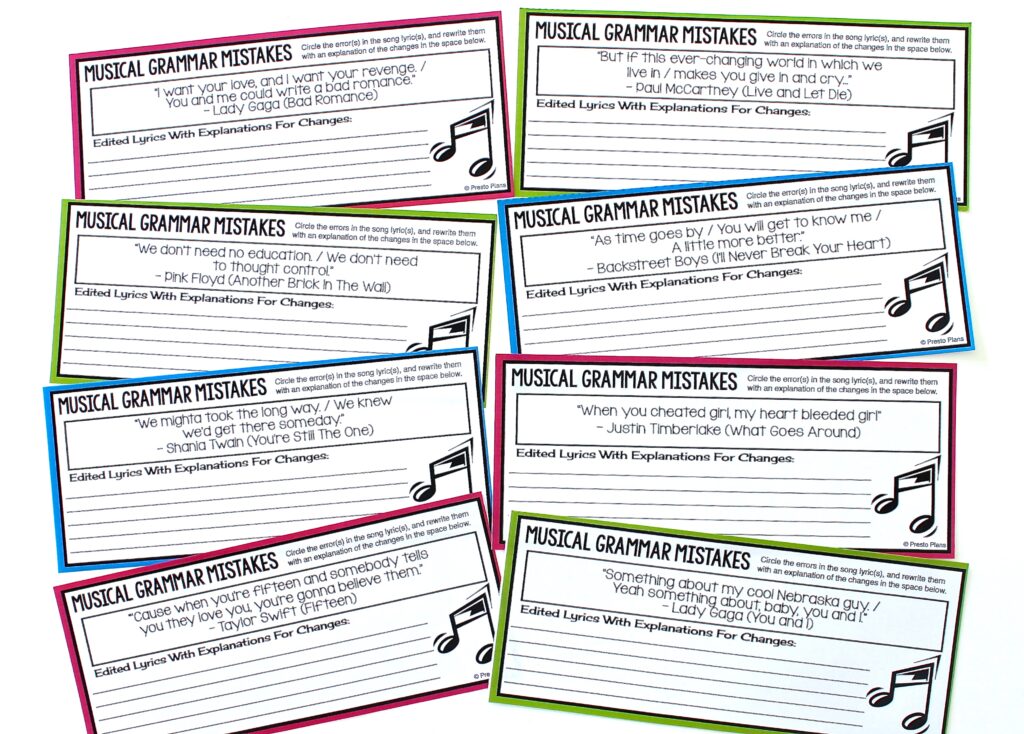
Here are some of my favorite activities for making grammar come alive in the classroom:
- The Grammar Challenge encourages students to collaborate, applying their grammar and problem-solving skills to complete weekly escape room-style challenges.
- Social media tasks, including the Editing Social Media Posts activity and the Editing Celebrity Social Media Grammar Errors assignment, can help students make real-world connections to their grammar learning.
- Grammar Text Fail task cards can be used as part of your regular grammar instruction (I love using them as a weekly bell-ringer on Text Fail Tuesday!), learning stations, or a partnered activity. With 40 different text messages containing spelling, grammar, or punctuation errors to spot, you can use this activity with your students all year long!
- Students can spot grammar errors in popular songs in the Editing Music Lyrics activity, which can be completed independently or in small groups! This resource can also be used as a weekly Musical Mistake task throughout the year!

9. How do I differentiate my grammar instruction?
The great thing about teaching grammar in middle school is that it is a skill students continue to come back to year after year! I think the main trick to making grammar accessible for all students in this age group, regardless of their ability, is to incorporate as much movement and interactivity into the learning as possible. This can really support students who struggle with attention and focus during traditional “desk” work!
Grammar instruction can also be differentiated by turning learning tasks from the Grammar Challenge into scaffolded stations – students who are ready can work on more advanced concepts, while students who need a bit more time with the basics can work on challenges at their level. This way, everyone has an entry point for grammar and can build on their own personal set of skills. Pre-tests, free writes, or other formative assessments can be used to determine each student’s starting point with grammar and can guide you in designing learning tasks that meet their individual needs.
Some students who require additional processing time might also benefit from a reduction in workload. For example, these students may complete two questions instead of five when completing written responses. I also really like providing visual aids to support the class as they practice grammar skills. Posters, personal checklists, and other tools can help students who need regular reminders of grammar rules.
10. How can I give feedback in an encouraging way?
Remember the dreaded “red pen” from your own middle or high school days? Too much negative feedback can be discouraging for students. Instead, I recommend a more targeted approach (which saves time for you, too!). When grading assignments for grammar, I like to focus on just one or two specific areas, rather than every single individual error the student makes. For example, you might offer feedback only on capitalization errors, even if there are other mistakes in the students’ writing. Targeting one or two things at a time gives students something concrete to improve without overwhelming them. Once they have mastered one concept, then you can move on to the next.
I also recommend getting into the habit of hosting regular writing conferences with your students! These brief meetings allow you to offer students encouraging feedback about the content of their writing (their creative ideas, their ability to organize their thoughts, etc.), and offer suggestions or targeted feedback about where they can strengthen their work. I find this type of conferencing creates an environment where students are more willing to take risks with their writing – and this is where the learning really happens!
There you go! I hope these answers give you a fresh perspective on teaching grammar in middle and high school ELA! I promise, it really can be a lot of fun! Learn all about the Full-Year Grammar Challenge Program by clicking the image below.
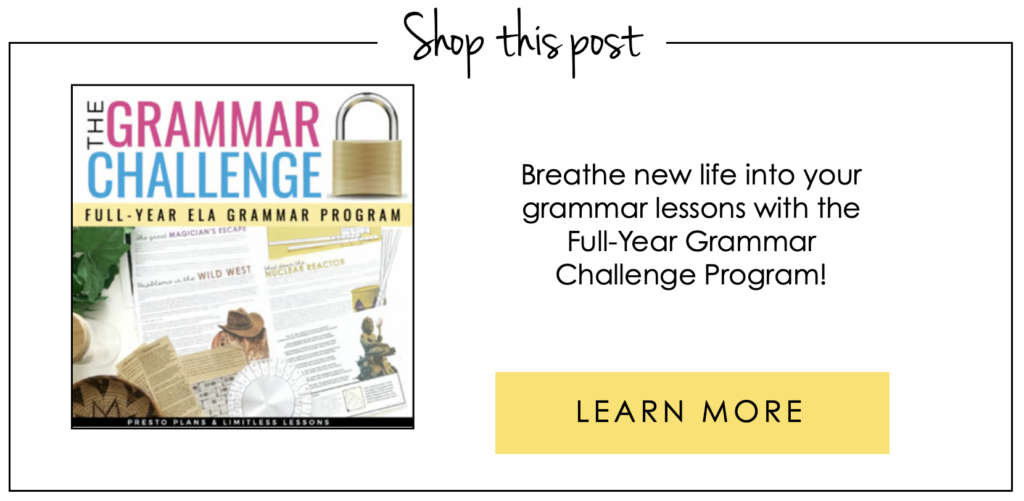
Looking for more support with teaching grammar in middle school ELA? Check out my post on 5 Activities to Make Grammar Fun!
Search the blog for what you are teaching
GIVEAWAYS
sent straight to your inbox!
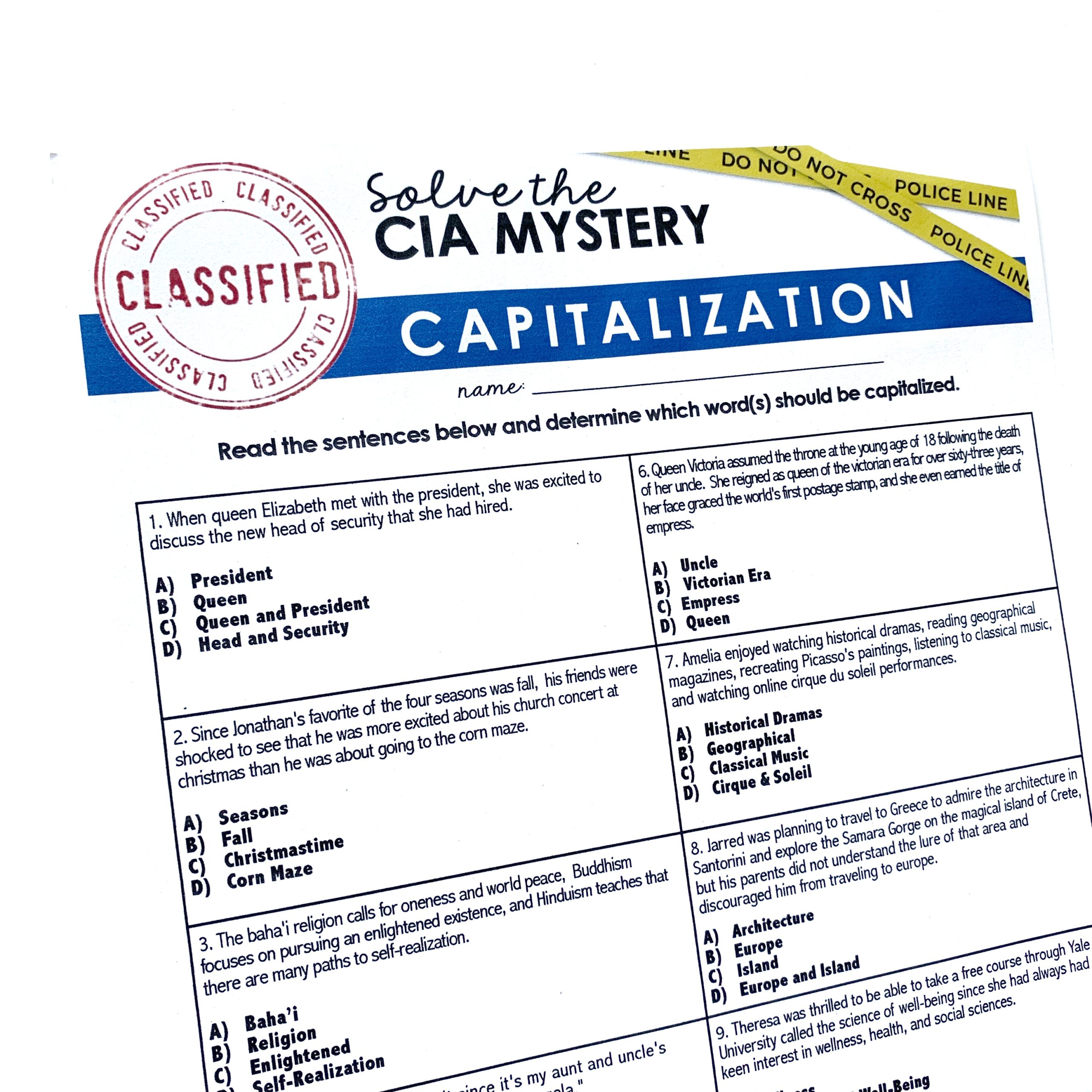

share this post